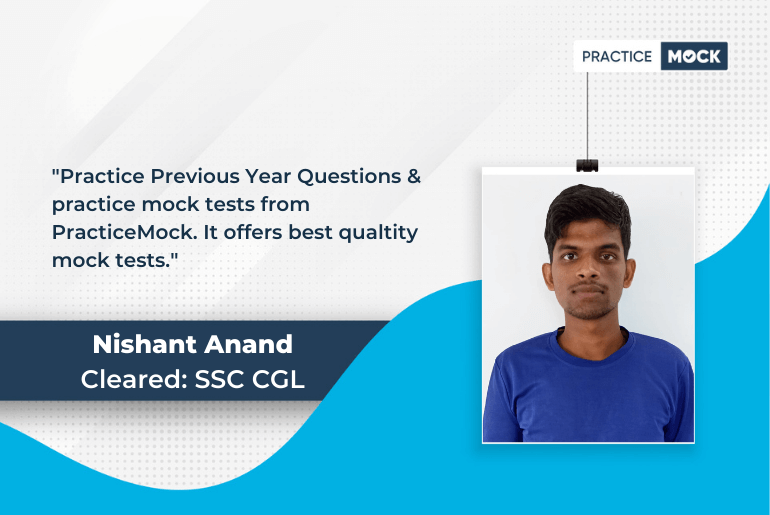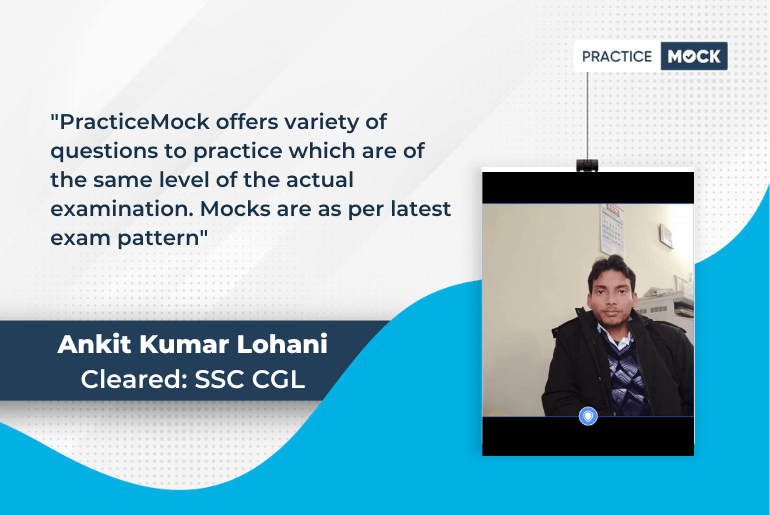Want to master the art of answering Number Series Questions? Peculiarly, Number Series, which is a part of the General Intelligence and Reasoning section in SSC CGL 2023 exam, is a type of logical reasoning that involves finding the missing or wrong number in a sequence of numbers following some pattern. The series can be based on mathematical operations, place of letters in alphabetical order, and so on. There is no set pattern and each question may follow a different type of pattern or sequential arrangement of letters or digits, which candidates need to detect using their common sense and reasoning ability.
In this article, we have classified the number series reasoning section into several types based on various types of questions that are asked in various competitive examinations. Take a Free Mock Test to gauge your present knowledge of the Number Series.
Also read: SSC CGL Tier 1 2023-How to Score 40+ Marks in English Comprehension?
Also read: SSC CGL 2023 Free Mock Test
Also read: SSC CGL 2023-41 Days Study Plan for Job Goers
Explore the Different Kinds of Number Series & the Best Tips to Counter Them
Let’s dive into the various kinds of questions that you may encounter in this topic. Here are some of them:
- Addition Series: This is where you add certain numbers following a pattern to get the next number in the series.
- Subtraction Series: This is where you subtract certain numbers following a pattern to get the next number in the series.
- Multiplication Series: This is where you multiply a specific number pattern to get the next number in the series.
- Division Series: This is where you divide a specific number pattern to get the next number in the series.
- Square Series: This is where each number is a perfect square of a specific number pattern.
- Cube Series: This is where each number is a perfect cube of a specific number pattern.
- Fibonacci Series: This is where the next number is the sum of the previous two numbers.
- Alternating Series: This is where multiple number patterns are used in turns to form a series.
- Mixed Operator Series: This is where multiple operations are used to get the next number in the series.
- Arranging Number: This is where you need to rearrange the numbers as instructed and then answer the questions based on that.
Don’t miss this chance to try a Free SSC CGL 2023 Mock Test right now!
How to Ace Number Series Reasoning
Here are some tips and tricks to help you solve the questions related to Number Series reasoning:
Tip 1: Identify the process involved in the given series such as addition, subtraction, multiplication, division, and so on to find out the right answer.
Tip 2: For arranging type number series, rearrange the given series by using various processes to find out the right answer.
There’s no time to waste – get your Free SSC CGL 2023 Mock Test now!
SSC CGL 2023 Exam-Solved Examples on Number Series
Here are some examples of how to successfully deal with questions on Number Series:
1. In the following question, select the missing number from the given series.
12, 19, 30, 43, ?
(1) 58
(2) 60
(3) 64
(4) 70
Ans: 2
Solution:
The logic followed here is:
The difference between the two consecutive numbers in the given series is the consecutive prime numbers starting from ‘7’.
12 + 7 = 19
19 + 11 = 30
30 + 13 = 43
43 + 17 = 60
So, ‘60’ is the missing term from the given series. The complete series is:
12, 19, 30, 43, 60
Hence, option b.
2. In the following question, select the missing number from the given series.
8, 4, 4, ?, 12, 30
(1) 7
(2) 9
(3) 8
(4) 6
Ans: 4
Solution:
The logic followed here is as shown below:
8 × 0.5 = 4
4 × 1 = 4
4 × 1.5 = 6
6 × 2 = 12
12 × 2.5 = 30
So, ‘6’ is the missing term from the given series. The complete series is:
8, 4, 4, 6, 12, 30
Hence, option d.
3. In the following question, select the missing number from the given series.
348, ?, 294, 267, 240, 213
(1) 321
(2) 333
(3) 309
(4) 319
Ans: 1
Solution:
The logic followed here is:
27 is subtracted from each number to get the next number.
348 – 27 = 321
321 – 27 = 294
294 – 27 = 267
267 – 27 = 240
240 – 27 = 213
So, ‘321’ is the missing term from the given series. The complete series is:
348, 321, 294, 267, 240, 213
Hence, option a.
4. In the following question, select the missing number from the given series.
24, 73, 137, ?, 318, 439
(1) 198
(2) 205
(3) 218
(4) 215
Ans: 3
Solution:
The logic followed here is:
The difference between the two consecutive numbers in the given series is the square of the consecutive numbers starting from ‘7’.
24 + 49 = 73
73 + 64 = 137
137 + 81 = 218
218 + 100 = 318
318 + 121 = 439
So, ‘218’ is the missing term from the given series. The complete series is:
24, 73, 137, 218, 318, 439
Hence, option c.
5. In the following question, select the missing number from the given series.
3888, 1296, ?, 144, 48, 16
(1) 545
(2) 432
(3) 412
(4) 423
Ans: 2
Solution:
The logic followed here:
Each number is divided by 3 to get the next number.
3888 ÷ 3 = 1296
1296 ÷ 3 = 432
432 ÷ 3 = 144
144 ÷ 3 = 48
48 ÷ 3 = 16
So, ‘432’ is the missing term from the given series. The complete series is:
3888, 1296, 432, 144, 48, 16
Hence, option b.
Takeaway
Now that you are well-acquainted with the type of questions that come under the team Number Series coupled with the best samples, you can test your skills at Number Series by taking Mock Tests and improving your skills further. Take a Free Mock Test to start your journey of mastering the art of answering Number Series.
Testimonies of Students Who Cracked via PracticeMock:
- Sign Up on Practicemock for Updated Current Affairs, Free Topic Tests and Free Mini Mocks
- Sign Up Here to Download Free Study Material
Free Mock Tests for the Upcoming Exams
- IBPS PO Free Mock Test
- RBI Grade B Free Mock Test
- IBPS SO Free Mock Test
- NABARD Grade A Free Mock Test
- SSC CGL Free Mock Test
- IBPS Clerk Free Mock Test
- IBPS RRB PO Free Mock Test
- IBPS RRB Clerk Free Mock Test
- RRB NTPC Free Mock Test
- SSC MTS Free Mock Test
- SSC Strenographer Free Mock Test
- GATE Mechanical Free Mock Test
- GATE Civil Free Mock Test
- RRB ALP Free Mock Test
- SSC CPO Free Mock Test
- AFCAT Free Mock Test
- SEBI Grade A Free Mock Test
- IFSCA Grade A Free Mock Test
- RRB JE Free Mock Test
- Free Banking Live Test
- Free SSC Live Test








